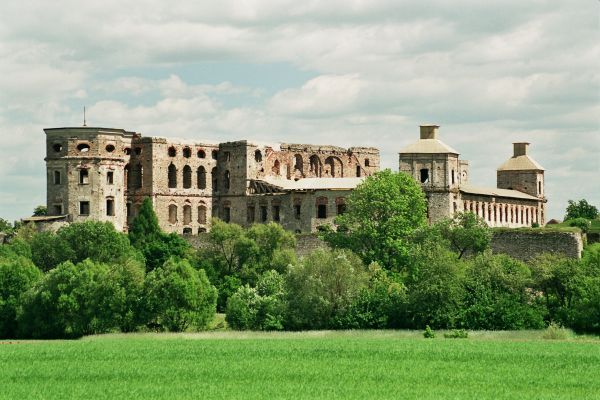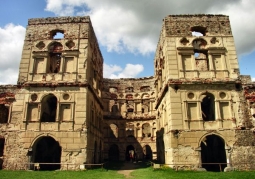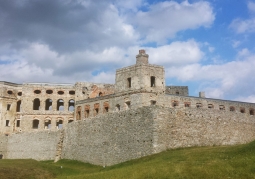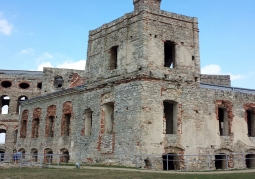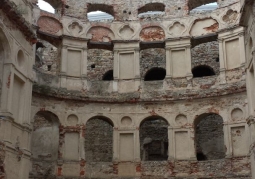No weather data
0.0 /5
Number of ratings: 0
This is actually a palace mistakenly called a castle. Built in the Italian style of the palazzo in fortezza (i.e. a residence combining the comfort of residents with a defensive function) in the years 1627–1644 by Krzysztof Ossoliński. The story of the creation of the ruin full of magic and mystery and its splendor is still not fully understood. Samuel Jerzy Kalinowski, the mobile clerk, was the host of the castle after the Ossoliński family. During his reign, a Swedish deluge took place in Krzyżtopor in Poland. In 1655, the invaders, led by General Duglas, seized the castle and later plundered its interior. The castle slowly became an uninhabited ruin. In the post-war period, Krzyżtopór became the property of the Treasury, but it was not until 1991 that the facility was made available to tourists. Since 2007, the castle is supervised by the Commune Office in Iwaniska. Now every tourist can learn about the history and size of the Ossoliński family, the fantastic wealth of Polish magnates, and the power and greatness of 17th-century Poland. In addition to visiting, the ruins have the opportunity to organize a bonfire in their area. You can rent equipment for frying and baking on fire. In addition, there are many benches and tables. You can also extend camping due to the possibility of pitching a tent in the castle area.
Komentarze
No results
Nearby places
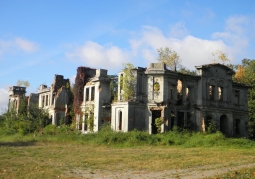
Karski Palace - Włostów
Category: PalacesA neo-Renaissance palace erected in 1854-1860 at the request of Stanisław Karski in the village of Włostów, with a surrounding park of approximately 10 hectares. The palace itself consisted of 30 rooms, including...
11 km

St. Collegiate Church Martin's - Opatów
Category: ChurchesThe most valuable monument of Opatów, it occupies a unique place among the monuments of Romanesque architecture in Poland. It is one of the few well-kept buildings of this type. From the twelfth century to our time,...
13 km
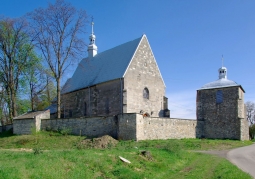
Gothic church Saint Giles Abbot - Ptkanów
Category: ChurchesLocated on a hill, the defensive, Gothic church stands on the remains of an older brother from the 12th century. At the top of the front facade, on the west side, there is a stone shield with the coat of arms of...
17 km
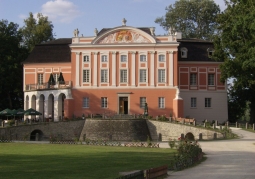
Popielów Palace - Kurozwęki
Category: PalacesThe palace from Kurozwęki has been preserved with the original urban layout. It was built at the turn of the 13th and 14th centuries. Dobiesław from Kurozwęki built a defensive wooden and brick castle here - one of...
20 km
Service prices
Normal ticket: PLN 10 Reduced ticket: PLN 7
Nearby places

Karski Palace - Włostów
Category: PalacesA neo-Renaissance palace erected in 1854-1860 at the request of Stanisław Karski in the village of Włostów, with a surrounding park of approximately 10 hectares. The palace itself consisted of 30 rooms, including...
11 km

St. Collegiate Church Martin's - Opatów
Category: ChurchesThe most valuable monument of Opatów, it occupies a unique place among the monuments of Romanesque architecture in Poland. It is one of the few well-kept buildings of this type. From the twelfth century to our time,...
13 km

Gothic church Saint Giles Abbot - Ptkanów
Category: ChurchesLocated on a hill, the defensive, Gothic church stands on the remains of an older brother from the 12th century. At the top of the front facade, on the west side, there is a stone shield with the coat of arms of...
17 km

Popielów Palace - Kurozwęki
Category: PalacesThe palace from Kurozwęki has been preserved with the original urban layout. It was built at the turn of the 13th and 14th centuries. Dobiesław from Kurozwęki built a defensive wooden and brick castle here - one of...
20 km
